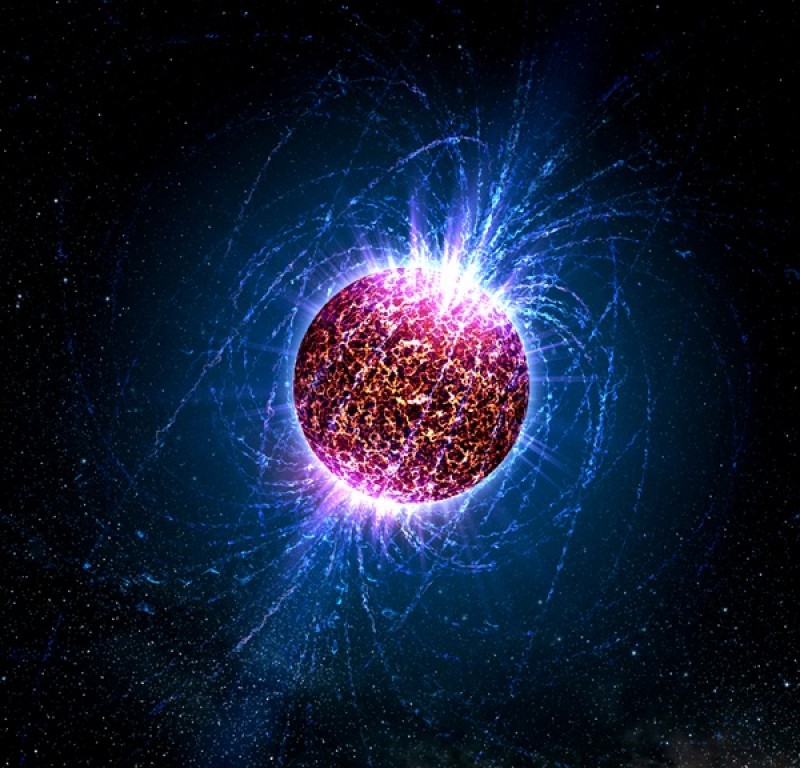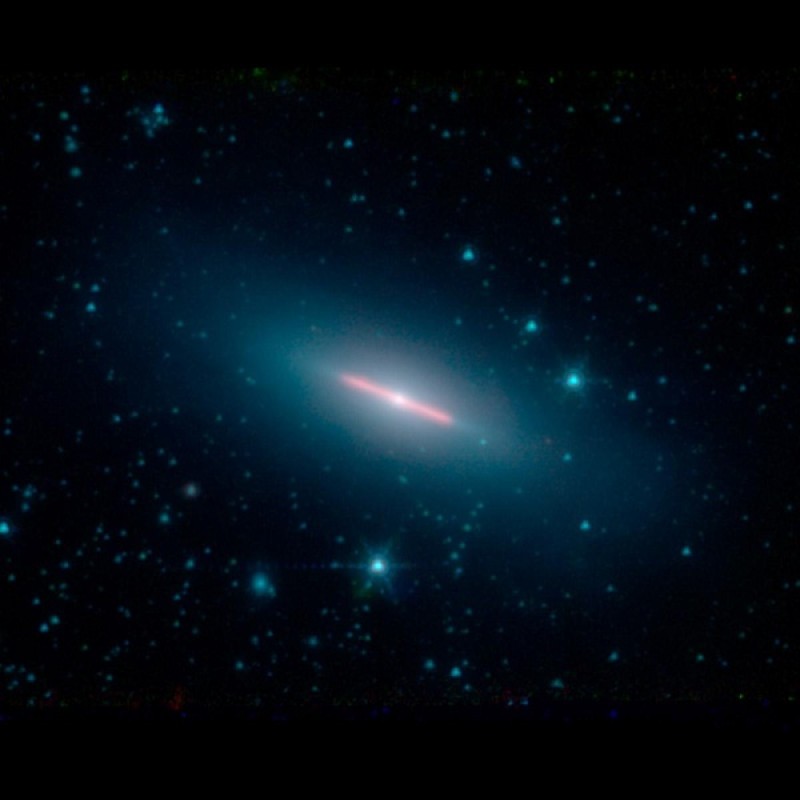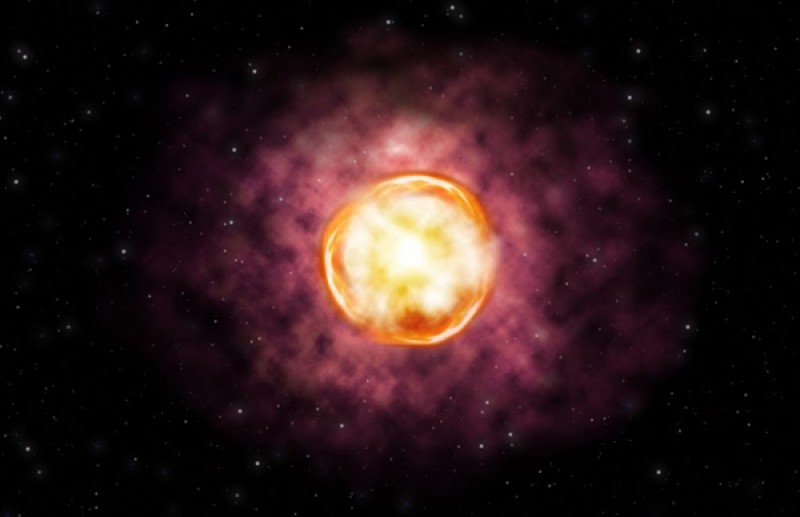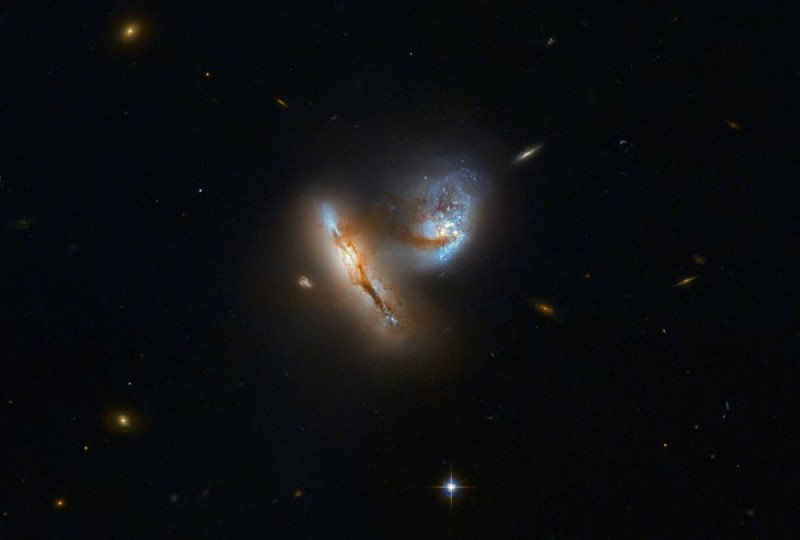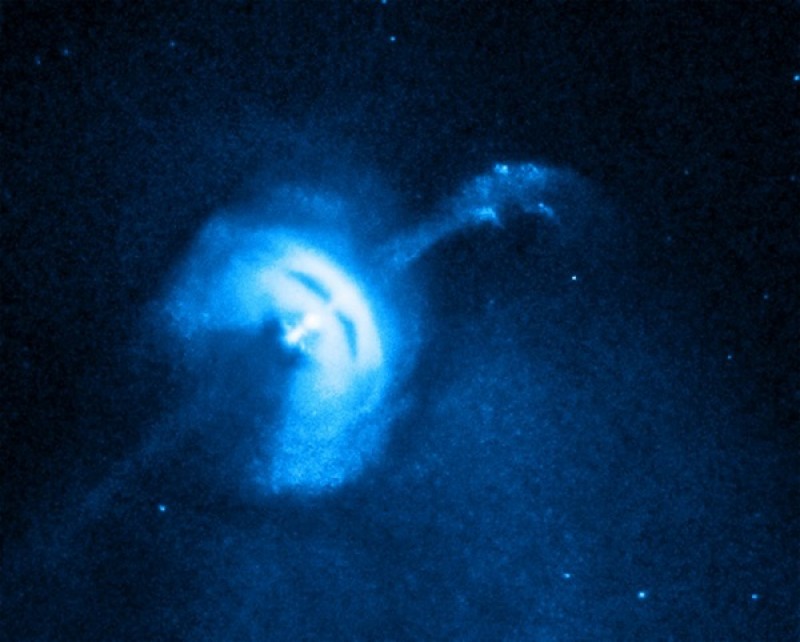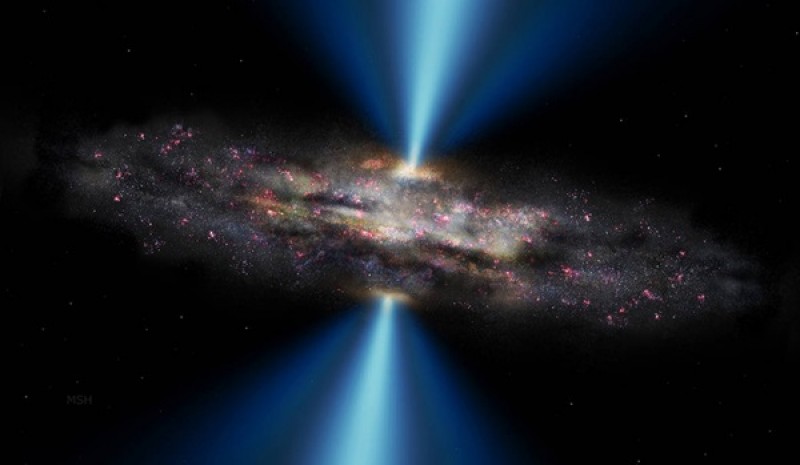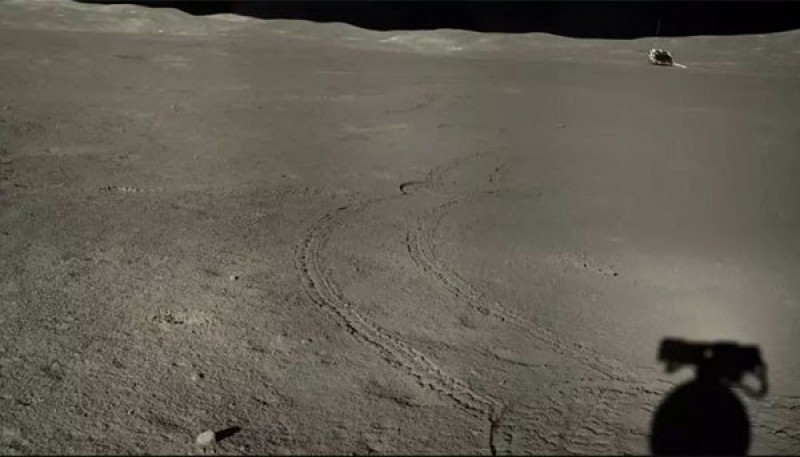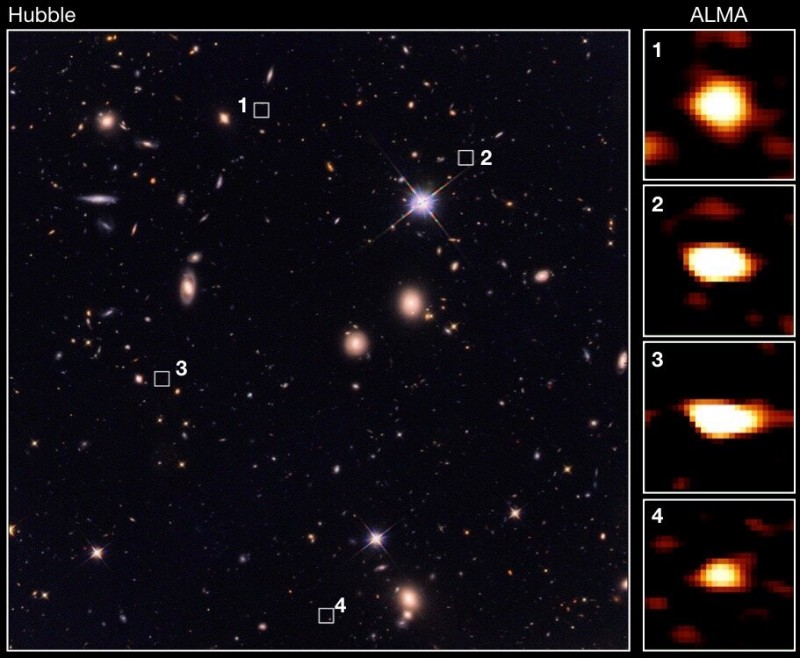News
8 new repeating fast radio bursts offer new opportunities for insights
Friday, August 23rd 2019 08:21 PM
Fast radio bursts are one of the most puzzling phenomena in astrophysics. But a new discovery of eight new sources for them might help scientists figure out what’s causing these intense outbursts of energy coming from distant galaxies.The newly discovered bursts are from repeating sources, meaning they were observed to burst multiple times. Previously, only two repeating fast radio bursts had been observed. The new observations suggest that repeating bursts are more common than previously thought.“It was certainly on the table that [repeaters] were pretty uncommon and you weren’t going to see many of them,” said Deborah Good, a co-author on the study and Ph.D. student at the University of British Columbia. “Having another eight sources is a good sign that it’s not terribly rare to have a repeater.”
Fast radio bursts are intense flashes of electromagnetic energy that last just fractions of a second. Finding repeaters is valuab...
Read More
Read More
3 Earth-sized exoplanets found just 12 light-years away
Thursday, August 22nd 2019 07:57 PM
There is a triplet of Earth-sized planet candidates orbiting a star just 12 light-years away, a new study has found. And one appears to be in the habitable zone.
All three candidates are thought to be at least 1.4 to 1.8 times the mass of Earth, and orbit the star every three to 13 days, which would put the entire system well within Mercury’s 88 day orbit of the Sun. The planet orbiting the star every 13 days, dubbed planet d, is most interesting to scientists — it falls within the star’s habitable zone where liquid water could exist on the surface.
Exploring our neighborhood
“We are now one step closer [to] getting a census of rocky planets in the solar neighborhood,” said Ignasi Ribas, co-author on the new paper and researcher at the Institute of Space Sciences in Barcelona, Spain.
The planets’ host is GJ 1061, a type of low-mass star called an M dwarf that is the 20th nearest star to the Sun. The star is simi...
Read More
Read More
Spitzer spots a sideways galaxy in infrared
Tuesday, August 20th 2019 06:52 PM
The lightsaber looking galaxy lives 44 million lightyears away
The force seems to be strong in this galaxy far, far away. NGC 5866 sits 44 million lightyears from Earth, and, from our vantage point, looks uncannily like a Star Wars-worthy lightsaber. NASA’s Spitzer Space Telescope recently captured the picture, catching the galaxy exactly edge-on.Astronomers see most galaxies head-on, but NGC 5866 just happens to be positioned in a way that it appears to us as a straight line, rather than a spiral or ellipse. Spitzer sees in infrared light, and because of the dust surrounding the galaxy, NGC 5866 glows red, giving it the appearance of a Sith-like lightsaber. Due to its orientation, it’s hard for astronomers to learn much about this galaxy, but they can gather clues. For example, the galaxy’s ring of dust is very flat, indicating that it likely hasn’t collided with any other galaxies during its life.
Read More
Read More
A massive star completely destroyed by a supernova is puzzling scientists
Monday, August 19th 2019 07:49 PM
The death blast of a star some 200 times the mass of the Sun, challenges theories about how such massive stars die.
Supernova 2016iet is an example of one of the most extreme types of stellar explosions, though it has some odd features.
Gemini Observatory/NSF/AURA/ illustration by Joy Pollard
In November of 2016, the sharp-eyed Gaia spacecraft spied a supernova that exploded some billion light-years from Earth. Astronomers followed up with more telescopes, and quickly realized that this supernova – dubbed SN2016iet – was an odd one in many ways.For one, the star that caused the supernova seemed to orbit far in the hinterlands of its tiny, previously unknown dwarf galaxy, some 54,000 light-years from its center. Most massive stars are born in denser clusters of stars, and it’s a puzzle how this one came to form so far out.And this star was extremely massive, starting life as some 200 times the mass of the Sun, near the upper l...
Read More
Read More
Hubble captures dance of two merging galaxies
Thursday, August 15th 2019 10:46 PM
The iconic space telescope caught UGC 2369 as gravity pulls the galaxies together.
By Hailey Rose McLaughlin | Published: Monday, August 12, 2019
ESA/Hubble & NASA, A. Evans
NASA’s Hubble Space Telescope caught two galaxies merging in a dance-like fashion. The pair, dubbed UGC 2369, have been pulled together by gravity for quite some time now. And this pull creates the woven fabric of the blues and browns seen in the photo, which are actually dust, gas, and stars being pulled into the space between the galaxies.
Once the galaxies get close enough, the actual merger takes millions of years. But the process is quite common. When galaxies merge, they create new, bigger galaxies. For example, when two spiral galaxies come together, they can create an elliptical galaxy. One day in the distant future, some 4.5 billion years from now, the Milky Way and our nearby neighbor, the Andromeda galaxy, will likely merge as well.
 ...
Read More
Read More
Astronomers catch a pulsar 'glitching,' offering insights into the strange stars
Thursday, August 15th 2019 04:28 PM
Pulsars usually spin with clockwork precision, but sometimes they glitch in a strange sort of stellar hiccup. And astronomers just caught Vela pulsar in the act.
The Vela pulsar is known to glitch something like once every three years, when it speeds up for a few seconds.
X-ray: NASA/CXC/Univ of Toronto/M.Durant et al; Optical: DSS/Davide De Martin
When a massive star dies, it leaves behind a dense core called a neutron star. Many of these exotic suns spin rapidly, sending out beams of radiation like lighthouses, and these are called pulsars. They can rotate thousands of times a second, and spin so steadily that they can be used as cosmological clocks – except sometimes, when they glitch.
Some five percent of pulsars are known to glitch, when they spin faster for only a few seconds. It’s a puzzling hiccup in their otherwise precise spin rates. One example is the Vela pulsar, which sits roughly 1,000 light-years away from Earth and glitches a...
Read More
Read More
Astronomers Uncover Dozens of Previously Unknown Ancient and Massive Galaxies
Tuesday, August 13th 2019 10:36 PM
Astronomers Uncover Dozens of Previously Unknown Ancient and Massive Galaxies
For decades, astronomers have been trying to see as far as they can into the deep Universe. By observing the cosmos as it was shortly after the Big Bang, astrophysicists and cosmologists hope to learn all they can about the early formation of the Universe and its subsequent evolution. Thanks to instruments like the Hubble Space Telescope, astronomers have been able to see parts of the Universe that were previously inaccessible.
But even the venerable Hubble is incapable of seeing all that was taking place during the early Universe. However, using the combined power of some of the newest astronomical observatories from around the world, a team of international astronomers led by Tokyo University’s Institute of Astronomy observed 39 previously-undiscovered ancient galaxies, a find that could have major implications for astronomy and cosmology.
The team behind the discovery i...
Read More
Read More
Hubble settles an old debate about galaxies with supermassive black holes
Friday, August 9th 2019 05:59 PM
Are certain classes of galaxies really different, or just the same thing viewed from different angles? Astronomers may have just solved a long-standing mystery.
Galaxies with central black holes can take various forms depending on the angle at which astronomers see them.
NASA
Every large galaxy has a supermassive black hole at its center. And some of those black holes are actively ejecting huge amounts of high-energy light out into the cosmos.Astronomers divide some of these active galaxies, which otherwise look like normal spirals, into two types, so-called Seyfert 1 and Seyfert 2 galaxies. Seyfert 1 galaxies have distinctive light signatures that emerge from the fast-moving material just outside the black hole. Seyfert 2s lack these signals.But for three decades now, astronomers have suspected that these two types of galaxies might in fact be the same, we’re just seeing them from different angles. The thought was that a dusty ring around t...
Read More
Read More
New Images from China’s Chang’e 4 as Eighth Lunar Day Ends
Thursday, August 8th 2019 10:42 PM
China’s Chang’e 4 mission is continuing its science and exploration work on the farside of the Moon, having completed its eighth lunar day of activities on Wednesday.
This composite image showing the shadow of the Yutu-2 rover, roving tracks, and the distant Chang’e 4 lander was taken during lunar day 7. CNSA / CLEP
China's Chang’e 4 lunar lander and Yutu 2 (Jade Rabbit 2) rover powered down at 9:00 and 9:50 Universal Time (UT), respectively, on August 7th, just under 24 hours ahead of local sunset, according to an update from the China Lunar Exploration Program (CLEP).
The Yutu 2 rover has now covered a total of 271 meters (890 feet) since its deployment and continues to make its way west of the landing site in Von Kármán Crater. Chang'e 4 landed in the 180-km-diameter (112-mile) crater, which lies within the immense South Pole-Aitken impact basin, following local lunar sunrise on January 3rd. NASA’...
Read More
Read More
Astronomers discover vast ancient galaxies, which could shed light on dark matter
Wednesday, August 7th 2019 08:39 PM
Astronomers have used the combined power of multiple astronomical observatories around the world and in space to discover a treasure trove of previously unknown ancient massive galaxies. This is the first multiple discovery of its kind, and such an abundance of this type of galaxy defies current models of the universe. These galaxies are also intimately connected with supermassive black holes and the distribution of dark matter.
The Hubble Space Telescope offered unprecedented access to the previously unseen universe, but even it is blind to some of the most fundamental pieces of the cosmic puzzle. Astronomers from the Institute of Astronomy at the University of Tokyo wanted to observe objects they long suspected were out there, but which Hubble could not reveal. Newer generations of astronomical observatories have finally revealed what they sought.
"This is the first time that such a large population of massive galaxies was confirmed during the first 2 billion ye...
Read More
Read More
